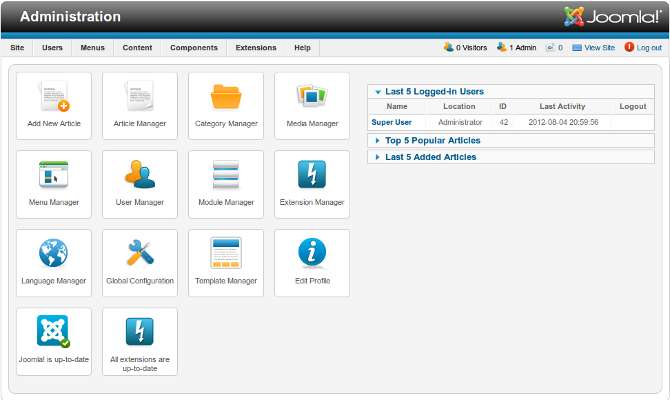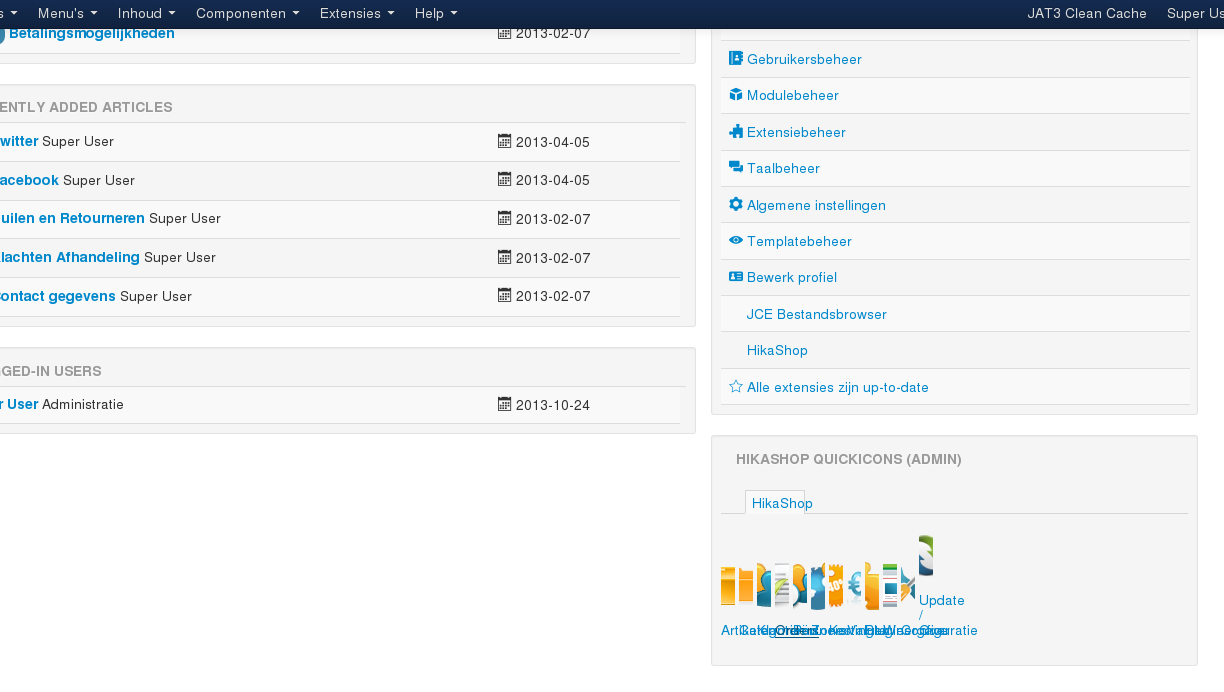

Now, anything with "Special" view access will be seen by both clients and Super Users (along with managers and authors, by default). Go to the second tab, and make sure you check "Client". Step 3: Add the "Client" user group to the "Special" view access level.īack in the list of access levels, click on "Special" to edit it. However, there are some cases when you might want to show things both to clients and to Super Users, so let's take care of that next. In most cases this is a good thing, because you can create specialized modules for your clients without cluttering up your own interface. This means that only clients will be able to see anything set to "Client" view access level no one else, not even Super Users, will see it. In the second tab, check the "Client" user group to add it to this level, and then Save & Close. I like to keep things simple and use the same name as the user group, so let's go with "Client" for now. In the left-hand menu, go to Users > Access Levels, and then click on the "New" button. Step 2: Create a new access level, and add your new user group to it. Make sure the parent group is "Public", so that we are starting from a blank slate with permissions. In the left-hand menu, go to Users > Groups, and then click on the "New" button.įill out the name of the user group. Well, you could start with one of the predefined user groups if you want (Manager would probably be closest), but I like to start from scratch so I can tweak it as I go.ĭefining a custom user group and view access level Step 1: Create a new user group. Phew! So what does that mean for our clients? Before loading any page in the front or back end, Joomla checks whether the user is logged in, what user groups they belong to, and whether they have a view access level that enables them to view the page.
User groups can be assigned to more than one view access level. Like user groups, Joomla comes with a few access levels pre-configured for convenience:

It's best to have as few Super Users as possible at any given time, and to make sure you deactivate old Super User accounts regularly.įinally, access levels determine what users can see, based on their user group. "Super Users" can do everything on the site their permissions cannot be limited.
#Joomla quickicons plus
So for example, "Registered" has basic permissions, "Author" has all those permissions plus a few more, "Editor" has the same permissions as "Author" plus more, and so on. Joomla comes set up with predefined user groups for convenience:Īs you can see, user groups are nested within each other, and they build upon each other. A user can belong to multiple user groups. User groups determine what a user can do. Each person should have their own user the login should not be shared among multiple people for security purposes.Ī user group is, well, a group of users. Joomla is super powerful and allows you to finely control user permissions, but it can be hard to wrap your head around all the different terms and options at first, so here's a quick primer!Ī user is an individual login. Users, User Groups, and Viewing Access Levels
#Joomla quickicons free
This is pretty much the same as Joomla 3, so if you are familiar with this already, feel free to skip ahead to Part 2 of this series. This post goes over the basics of adding a custom user group and view access level for your clients so you can precisely control what they see. and hides anything they don't need to see. That's a lot, and frankly, our clients usually don't need to see all of that!īy the end of this series, we will have a streamlined, optimized back-end for our clients that puts all of their most common tasks at their fingertips.
#Joomla quickicons full
Dashboards, side bars, and quick icons, oh my! As developers and integrators, we can take full advantage of all of these features and modules - but our clients might feel overwhelmed with the default options available to Super Users: Joomla 4 is here, and with it comes a completely revamped administration panel.


 0 kommentar(er)
0 kommentar(er)
